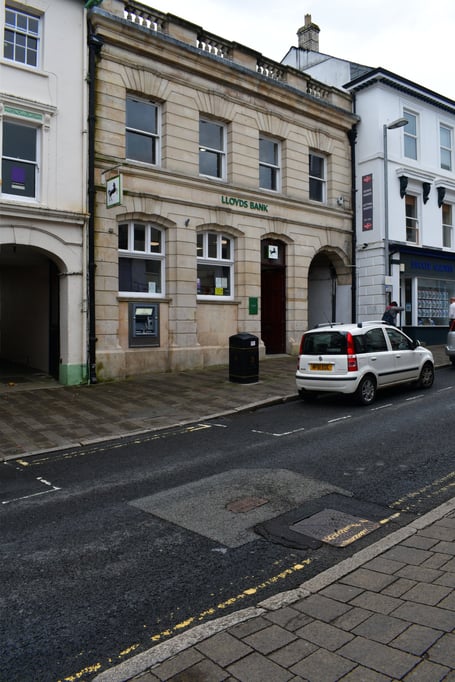EACH week, hundreds of planning applications come before Cornwall Council’s planning department, seeking to win approval for various plans right across the Duchy.
These plans can comprise of a number of different reasonings– ranging from permission to replace windows or listed building consent ranging up to large house building developments or changing of use of a building, for instance, from an office to a café, or flats.
Within this large and often complex system, there are a number of formats from which planning advice and approval can be sought.
These range from full applications where all the details which comprise a proposed development or work to a building are submitted, to outline applications, where further details are yet to be confirmed, for example, an outline application with reserved matters for appearance may not confirm the final proposed development but rather seek permission in principle.
An example of this is one for an outline permission for 20 dwellings on land with reserved matters for appearance and scale; the reserved matters would require further permission later for their inclusion.
Other types of applications include pre-application advice requests, where would-be developers submit often outline proposals to a local authority to ascertain whether it is likely to gain support or not prior to submitting a planning application.
The vast majority of applications are decided by planning officers employed by a local authority under ‘delegated powers’, meaning they do so on behalf of their employer, however, some applications are ‘called in’ by local councillors to be discussed at an area’s strategic planning committee meeting, meaning the final decision rests with a committee of councillors.
Dwelling Refused
PA24/00444: AN APPLICATION for the construction of a dwelling between two existing properties in Millbrook has been refused by Cornwall Council’s planning department.
Mr J Hancock applied to the local authority for permission to construct a dwelling on his property at High Cross House, Higher Anderton Road, Millbrook, Torpoint.
The site was described as the following: “The site comprises of a roughly rectangular shaped parcel of land that measures some 242 square metres in extent and is currently undeveloped, located to the east of the dwelling at High Cross House, and to the west of the dwelling at Hill Top, Millbrook. Both of these adjoining dwelling are read as single storey dwellings when viewed from the adjacent public highway, Knill Cross.
“The topography of the site falls steeply from north to the south across the length of the site. The western, northern and eastern boundaries of the site are enclosed by an existing stone boundary wall that varies in height, following the contours of the site.”
The plans had previously been refused in 2023, under planning application PA23/02945.

This refusal was acknowledged in the accompanying planning statement, where the agent for the applicant said: “By way of background in August 2023 the Council refused a planning application for a detached dwelling on the application site (PA23/02945) for the following reasons, namely that the design, massing, height together with the prominent and elevation position of the site would lead to a development that was considered incongruous and dominant, which could cause unacceptable harm to the wider street scene and due to the size of the proposed dwelling and considering the size of the site, the proposal would result in a form of overdevelopment resulting in a development that fails to represent good design.
“Due to the position of the proposed dwelling, considering the proximality of the neighbouring property, as a result of the height of the proposed dwelling the proposal would result in an unacceptable level of overshadowing and overbearing impacts upon the occupants of the neighbouring property.
“Notwithstanding these reasons for refusal, the Council did not oppose the principle of the provision of a new dwelling on the site, nor did the Council object as a result of highway safety, construction traffic impacts, the provision of on-site parking, land stability and run off-water.
“The design of the proposed dwelling has been suitably amended in order to address the concerns raised previously as demonstrated in this Statement and, as such it is considered that the proposal should be granted permission.”
However, not all were convinced, with 31 objections from residents, with Millbrook Parish Council offering no response to the proposal.
Refusing the application, Cornwall Council told the applicant: “By reason of its height, mass, layout and design in addition to the elevated and prominent position of the site, the proposed development would result in a bulky, incongruous and dominating form of development causing unacceptable harm to the appearance of the wider street scene, particularly when viewed from the village and lake below.
“Furthermore, due to the limited size and somewhat restricted nature of the site in addition to the scale and layout the proposed three- bedroom dwelling, the development would occupy a large proportion of the space available providing minimal separation between dwellings, eroding the lower density pattern of development of neighbouring properties, representing the overdevelopment of the site.
“The development does not closely reflect the traditional building styles or the characteristic pattern of the settlement, resulting in a material harm to the character of the area (AGLV).
“The development fails to represent good design and conflicts with policies 1, 2, 12 and 23 of the Cornwall Local Plan Strategic Policies 2010 - 2030 (adopted November 2016), paragraphs 135 and 139 of the National Planning Policy Framework 2023, Policy 5 of the Rame Peninsula Neighbourhood Development Plan, Sections 4.2.5 and 4.2.8 of the Cornwall Design Guide 2021 and policy C1 7) of the Climate Emergency Development Plan 2023.”
ATM Restoration
PA24/00589: PLANS to restore the state of the exterior of a listed building in Bodmin has been given conditional approval by Cornwall Council.
UBF Properties Limited requested permission for listed building consent for removal of an ATM and external signage of a listed building to restore back to original state.
It relates to the upcoming closure of the Lloyds Bank, on Fore Street in the town.
UBF Properties told the council: “Our primary aim is to restore the building to its original aesthetic, consistent with its listed status. The removal of the ATM and signage is crucial to reinstating the building's historical integrity and appearance.
“The building in question is a historically significant structure, formerly serving as a Lloyds bank. Its listed status underscores its architectural and historical value within the urban landscape.
“The proposed restoration works are designed to enhance the historical character of the listed building, ensuring its preservation for future generations while respecting its past. The removal of non-original elements like the ATM and modern signage is a crucial step in this conservation effort.
“This building's transition from a bustling financial institution to a preserved historical site echoes the changing dynamics of the local landscape, making its conservation crucial for maintaining a tangible connection to the area's rich heritage and history”
Cornwall Council approved the plans, subject to conditions, namely: Prior to the removal of the signage, details of the proposed making good following removal of the signage shall be submitted to and agreed in writing by the Local Planning Authority.
“Reason: To protect the special character of the listed building in accordance with Policy 24 of the Cornwall Local Plan 2010-2030 and paragraphs 203 and 212 of the National Planning Policy Framework 2023.
“Prior to the removal of the ATM, details for the materials, jointing and coursing for the infilling following removal of the ATM (this should be undertaken using matching stone and should reflect the coursing and jointing of the stonework in the adjacent recess) shall be submitted to and agreed in writing by the Local Planning Authority.
“Reason: To protect the special character of the listed building in accordance with Policy 24 of the Cornwall Local Plan 2010-2030 and paragraphs 203 and 212 of the National Planning Policy Framework 2023.”





Comments
This article has no comments yet. Be the first to leave a comment.